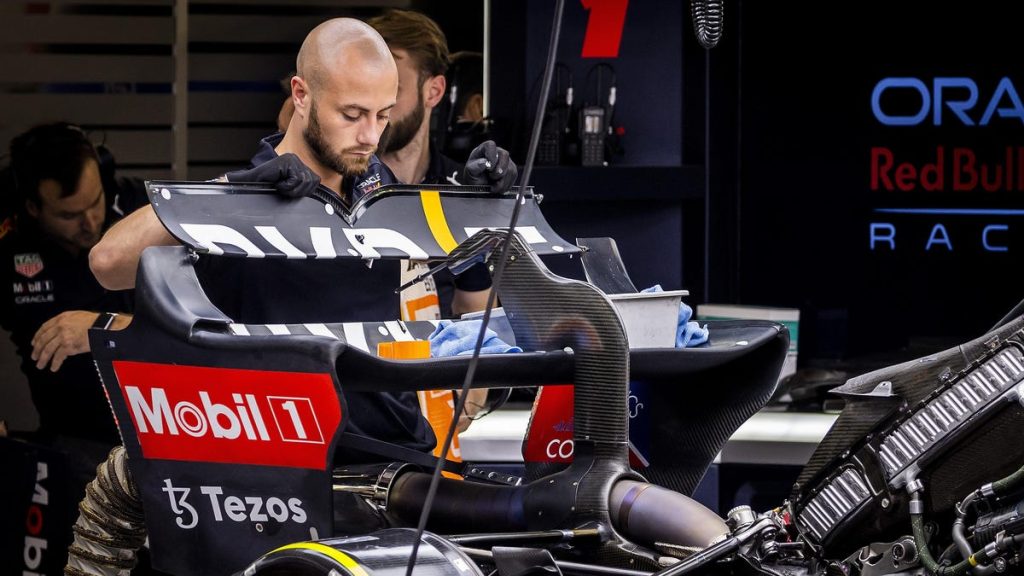F1 Wants Active Aero in 2026 to Make the Leader Slower

DRS could be going away in 2026… for Reverse DRS?Photo: ANP (Getty Images)
Active aerodynamics is a technical development that F1 has flirted with over the past decade. Driver-adjustable front wing flaps were introduced in 2009. The controversial Drag Reduction System (DRS) replaced the adjustable flaps in 2011. Rear-wing DRS was implemented in a way to make overtaking easier. Now, Formula 1 is considering a replacement for DRS as a method of handicapping car performance, starting with the championship’s next ruleset in 2026.
Ross Brawn, Formula 1’s retiring managing director of motorsport, revealed to Motorsport.com that rule-makers are looking at active aerodynamics to improve the racing. F1 would likely use active aero to boost the performance of following cars. In the wake of other cars, drivers would theoretically be allowed to have lower downforce levels in the straight for higher straight-line speeds and higher downforce levels in the corners for higher cornering speeds. Brawn also posited that the system could be used as a reverse DRS to prevent the race leader from driving away from the field.
Brawn said:
“If you have active aerodynamics, then of course you could affect the car in front. You could have a proximity [that] once you get within a certain degree, the car in front loses a little bit of downforce and you gain a little bit of downforce. There’s tricks you can play with that. It becomes an opportunity.”
“I’m not saying we would do that, but it becomes an opportunity. So, the 2026 car is lessons learned from what we have now and I think we’ll incorporate some form of active aerodynamics.”
I’m not wholly against the active aero idea as a replacement for DRS. Here’s a hypothetical example, F1 regulates active aerodynamics in 2026 by mandating the cars’ maximum and minimum wing angles. The range between the maximum and minimum angles varies based on the current race positions to balance on-track performance. The race leader would have the narrowest range, and the last-placed cars with the widest range. The ranges wouldn’t update immediately with passes, but once per lap to discourage the gamesmanship we see with DRS. The ultimate goal with my hypothetical future would be to promote close racing subtly, without a DRS insta-pass button.
Formula 1 has done a lot to draw new viewers to the sport over the past few years, and now it wants the on-track product to keep fans engaged. It might be unclear what kind of racing we will see in four years, but F1 is exploring various options to give everyone a reason to tune in at home or show up in-person at circuits around the world.



